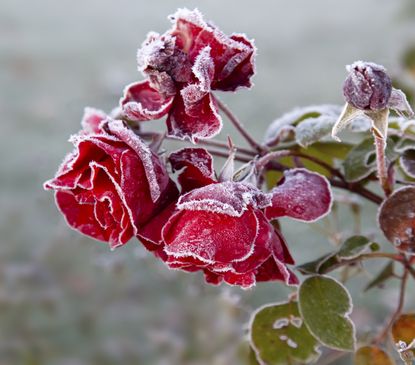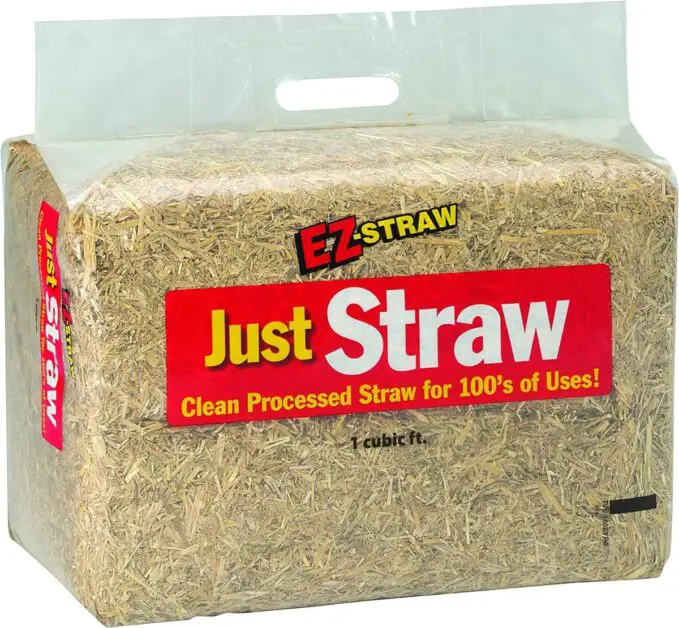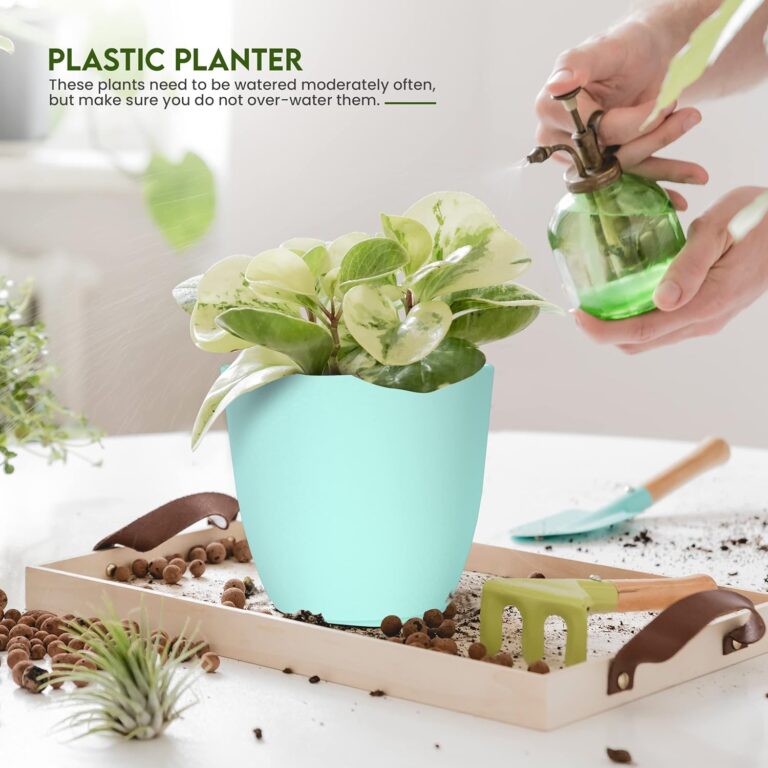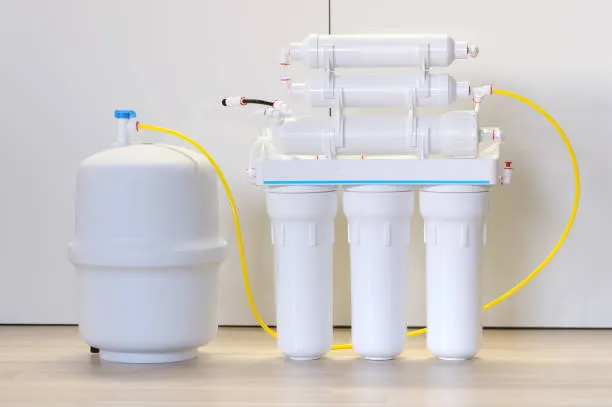How to Shield Plants from Frost: Tips and Tricks to Keep Your Plants Healthy and Alive in Cold Weather
Are your beloved garden greens feeling the chill as winter rolls in? Don’t let Jack Frost take a toll on your precious plants! Discover the secrets to shielding your greens from frost’s icy grip with our expert tips and tricks. From simple DIY solutions to tried-and-true methods, we’ve got you covered. Learn how to protect your plants like a pro, ensuring they stay healthy and vibrant even in the coldest of weather. With our comprehensive guide, you’ll be equipped to weather any frosty forecast and keep your garden thriving year-round. Get ready to become the ultimate plant protector!
Table of Contents
Understanding the Impact of Frost on Plants
Frost can have a significant impact on plants, causing damage to their cells and tissues. When temperatures drop below freezing, ice crystals can form within plant cells, leading to cell wall rupture and cell death. This damage can be especially devastating for delicate plants and young seedlings.
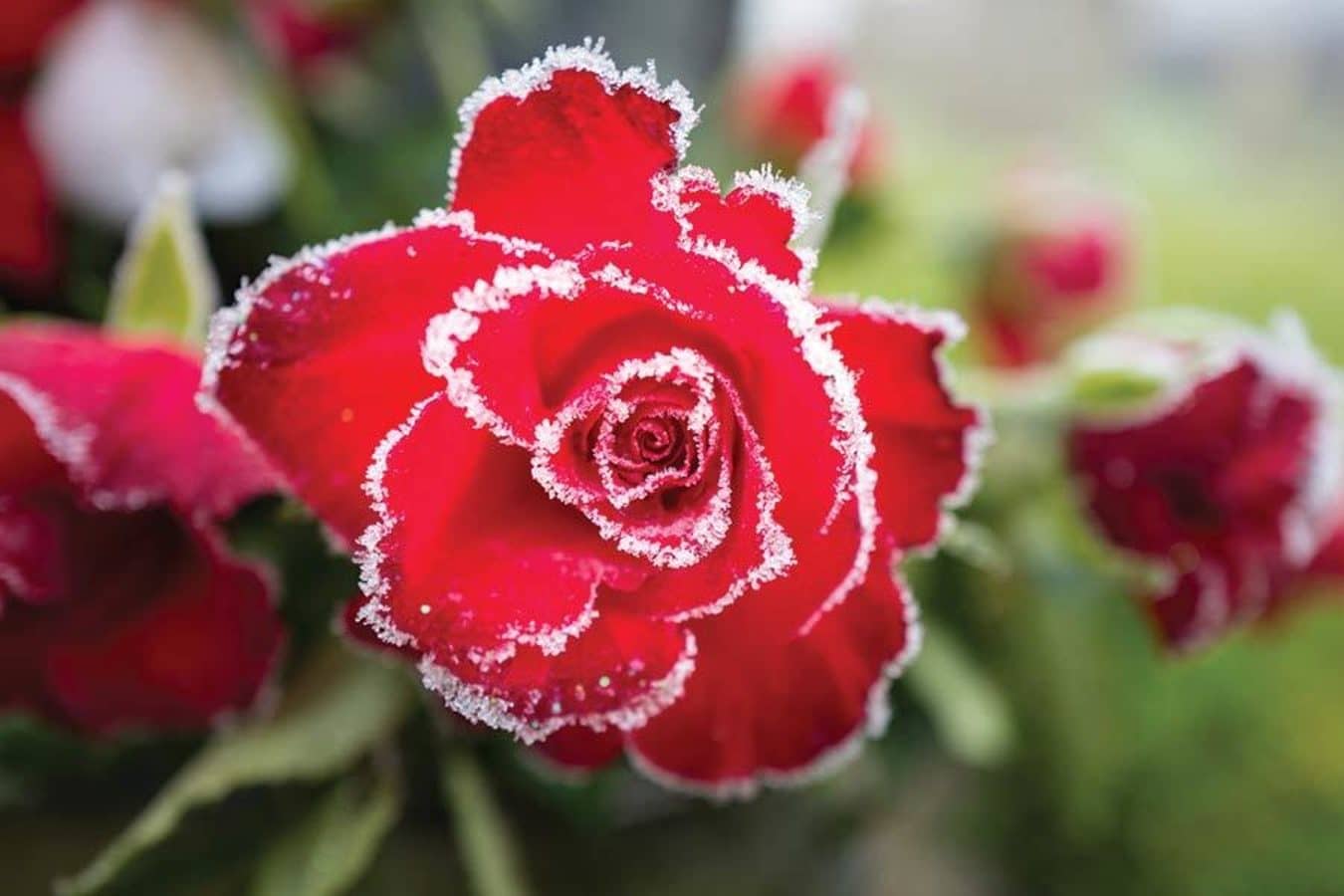
- Frost can cause cellular damage to plants, but its effects extend beyond immediate injury.
- Prolonged exposure to cold temperatures can slow down or stop plant growth altogether.
- This can result in stunted or distorted growth patterns, affecting the overall health and appearance of the plant.
- Frost can also disrupt the plant’s ability to absorb nutrients and water, further compromising its vitality.
- Understanding the long-term effects of frost on plant growth is essential for gardeners and plant enthusiasts.
- Awareness of these impacts empowers individuals to take proactive measures to protect their plants.
- By implementing strategies to minimize frost damage, gardeners can create optimal growing conditions for their flora.
Identifying Vulnerable Plants in Cold Weather
Determining which plants are vulnerable to the effects of cold weather is crucial in maintaining a healthy garden all year round. Certain plants are more susceptible to damage from frost and low temperatures, making it important for gardeners to be able to identify and protect them accordingly.
Definition: Tender plants refer to species that are not well-adapted to withstand freezing temperatures.
Examples: Banana trees, bougainvillea, and many citrus varieties fall into this category.
Risk: Even a short exposure to frost can cause significant damage to these plants.
Young and Newly Planted Plants: These are particularly sensitive due to their underdeveloped root systems.
Root Limitations: Limited root growth hinders nutrient and water uptake from the soil.
Susceptibility: Young plants are more susceptible to damage caused by freezing temperatures.
Covering: Use protective coverings like frost cloth or blankets to shield tender plants from frost.
Mulching: Apply a layer of organic mulch around the base of young plants to insulate the soil and retain heat.
Watering: Water the plants thoroughly before a cold spell to prevent dehydration.
Location: Plant tender species in sheltered areas or near structures that provide some warmth.
Natural Barriers: Consider planting hardier species around tender plants to act as windbreaks.
By being aware of the vulnerability of certain plants to cold weather, gardeners can take appropriate measures to protect them and ensure their well-being. Whether it be providing additional insulation, moving them to more sheltered areas, or using protective covers, understanding the susceptibility of different plant species is key in maintaining a thriving garden in colder climates.
Choosing the Right Site for Planting
Choosing the right site for planting is crucial for the success of your garden. By carefully considering the site, you can provide the optimal growing conditions for your plants and minimize the risk of frost damage. There are several factors to keep in mind when selecting a site for planting.
:max_bytes(150000):strip_icc()/growing-seeds-indoors-common-mistakes-847800-05-db13b15adbbb4d3a9097230c5bb97cc4.jpg)
Assess Sunlight Exposure:
- Determine if the site receives at least six hours of direct sunlight daily.
- Observe for shaded areas caused by nearby structures or trees.
- Note the orientation, favoring south-facing locations for optimal sunlight.
Consider Topography:
- Choose a well-drained location to prevent waterlogging.
- Poor drainage can lead to root rot and increase frost susceptibility.
- Avoid low-lying areas where cold air accumulates, promoting frost formation.
By carefully assessing the exposure to sunlight and the topography of the site, you can choose a suitable location that promotes healthy plant growth and reduces the risk of frost damage.
Preparing Plants for Frost: Pruning and Trimming
Pruning and trimming plants before the onset of frost is an essential step in preparing them for the harsh winter conditions. Properly pruned plants not only have a better chance of surviving the frost, but they also tend to be healthier and more resilient overall.

- Remove Dead or Damaged Branches:
- Dead or damaged branches serve as entry points for frost damage.
- By pruning them, you reduce the risk of frost-related harm.
- Improved air circulation results from removing these branches, promoting overall plant health.
- Shape and Direct Growth:
- Pruning helps shape the plant, directing its growth.
- By removing excessive foliage or exposed branches, you create a more compact and sturdy form.
- This shape is better equipped to withstand colder temperatures.
- Precision and Care:
- Pruning should be done with precision and care.
- Over-pruning weakens the plant and increases frost susceptibility.
- Consult gardening guides or seek professional advice for specific plant types.
Remember, thoughtful pruning contributes to both plant resilience and aesthetic appeal! 🌿❄️In the next section, we will delve into another crucial aspect of protecting plants from frost – mulching techniques.
Mulching Techniques to Protect Plants from Frost
Mulching is an effective technique to protect plants from frost and maintain their health throughout the winter season.
Select Organic Mulching Material:
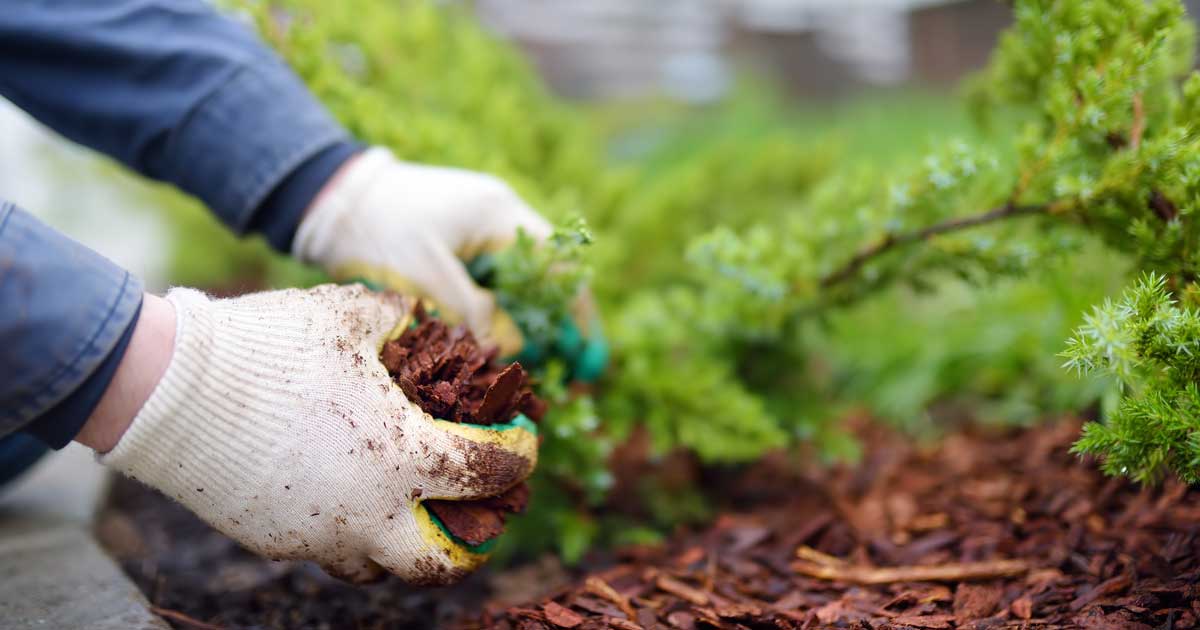
- Choose from options like straw, leaves, hay, or wood chips.
- Organic materials provide insulation and gradually enrich the soil with nutrients.
Prepare the Area:
- Clear any debris or weeds from around the base of the plants.
Spread Mulch:
- Spread a layer of mulch around the base of plants, ensuring it extends a few inches beyond the drip line.
- Maintain a thickness of 2-4 inches for optimal insulation and moisture retention.
Avoid Contact with Stems:
- Ensure that the mulch is not piled against the stems of the plants to prevent rot and other issues.
Monitor Moisture Levels:
- Check soil moisture regularly and adjust watering as needed, as mulch helps retain soil moisture during colder months.
By implementing these mulching techniques, gardeners can ensure their plants stay protected from frost, leading to healthier and more robust growth in the upcoming seasons.
Using Protective Covers and Cloths for Frost Protection
Protecting plants from frost during the winter months is crucial to ensure their survival and ongoing growth. Using protective covers and cloths is a highly effective method to shield plants from the damaging effects of frost. These covers act as a barrier between the plant and the cold temperatures, helping to trap warmth and create a microclimate around the plant.
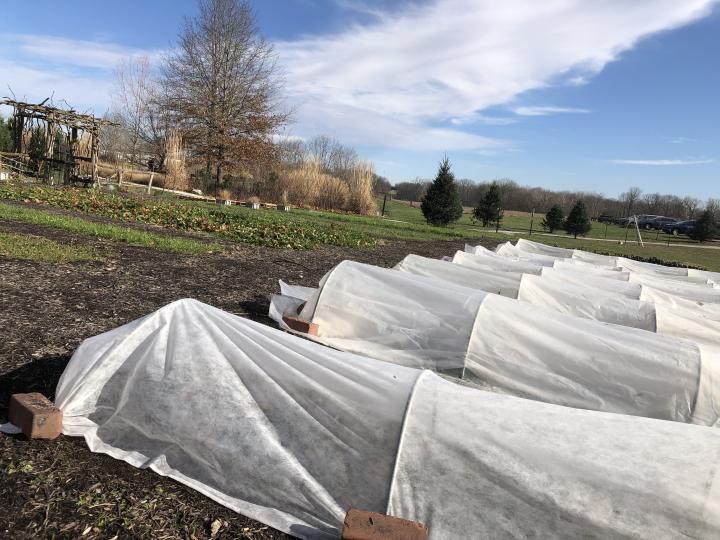
Choose materials like burlap, frost cloth, or floating row covers.
Ensure the material allows air and moisture circulation while providing insulation.
Clear any debris or obstructions around the plants.
Drape the selected cover over the plants or secure it with stakes or clamps .
Ensure the cover extends to the ground to provide complete protection.
Keep an eye on the weather forecast to anticipate frost events.
Remove covers during milder periods to prevent heat buildup and humidity.
Check the covers periodically for damage or shifting.
Make adjustments as needed to maintain proper coverage and protection.
Remove covers once the threat of frost has passed to allow plants to receive adequate sunlight and airflow.
Store covers properly for future use.
By employing the use of appropriate protective covers and cloths, gardeners can effectively safeguard their plants from frost and ensure their successful growth and development throughout the winter season.
After using the Frost Protection Cloth in my garden, I found it to be a reliable solution for shielding my plants from frost damage. Its generous size provided ample coverage for multiple plants, and the breathable fabric ensured that my plants received adequate airflow while still being protected from frost. Installation was straightforward, and I appreciated the reusability of the cloth, making it a cost-effective option for seasonal protection.
However, I did notice some limitations during use. While the cloth effectively protected against light frost, it struggled to withstand heavier frosts or prolonged periods of freezing temperatures, resulting in some damage to more delicate plants. Additionally, in windy conditions, the cloth required additional securing to prevent it from being blown away and potentially damaging the plants it was meant to protect. Despite these drawbacks, overall, the Frost Protection Cloth proved to be a valuable asset in my garden, providing peace of mind during colder weather and helping to extend the growing season for my plants.
- Effective Frost Protection: The frost protection cloth provides a barrier against frost, protecting delicate plants from cold temperatures and frost damage.
- Reusable: This cloth is reusable, allowing you to use it season after season, making it a cost-effective solution for protecting your plants.
- Large Coverage Area: With dimensions of 10ft×33ft, the cloth offers ample coverage to protect multiple plants or larger garden areas.
- Breathable: The cloth is designed to be breathable, allowing air and moisture to reach plants while still providing protection from frost.
- Easy to Install: Installing the frost protection cloth is simple and straightforward, making it accessible for gardeners of all skill levels.
- Versatile: In addition to frost protection, the cloth can also be used to provide shade during hot weather or to protect plants from pests.
- Limited Durability: Some users have reported that the cloth may tear or degrade over time, particularly with frequent use or exposure to harsh weather conditions.
- Not Completely Waterproof: While the cloth offers protection against frost, it may not provide complete protection against heavy rain or snow, which could potentially damage plants underneath.
- May Require Additional Support: In windy conditions, the cloth may need additional support or anchoring to prevent it from being blown away or causing damage to plants.
- Not Suitable for All Plants: Certain delicate or sensitive plants may require additional protection beyond what the frost cloth can provide, particularly in extremely cold climates.
- Limited Aesthetic Appeal: While functional, the frost protection cloth may not add to the aesthetic appeal of your garden, especially if used for extended periods.
- Storage Space Needed: When not in use, the large size of the cloth may require adequate storage space, which could be a consideration for gardeners with limited storage options.
Utilizing Greenhouses or Cold Frames to Shield Plants
Greenhouses and cold frames are excellent tools for protecting plants from frost and extending the growing season. These structures provide a controlled environment for plants, shielding them from harsh cold temperatures and frosty conditions. By harnessing solar energy and creating a barrier against the elements, greenhouses and cold frames can offer a significant advantage to gardeners.
:max_bytes(150000):strip_icc()/what-are-cold-frames-0622-074a8bb897ff45d79e6bf907a7af9842.jpg)
- Regulating Temperature and Humidity:
- Both greenhouse and cold frames allow you to create a controlled microclimate.
- You can adjust temperature and humidity levels to suit your plants’ needs.
- This customization promotes optimal growth and protects plants from extreme weather conditions.
- Greenhouse Advantages:
- Transparent Walls: Greenhouses have transparent walls (usually made of glass or plastic).
- Sunlight and Heat: Sunlight enters, and heat gets trapped, creating a warm environment.
- Plant Protection: Greenhouses shield plants from frost, wind, and other harsh elements.
- Cold Frame Features:
- Lower Height: Cold frames are typically lower in height than greenhouses.
- Opaque Sides: Their sides are often opaque, providing insulation and shelter.
- Cold-Tolerant Plants: Cold frames are ideal for growing frost-sensitive plants.
- Versatility for Gardeners:
- Plant Selection: Both options allow you to grow tender plants that might not survive outdoors.
- Successful Growing Season: Even in colder climates, you can enjoy a productive growing season.
- Seed Starting: Greenhouses and cold frames are excellent for starting seeds early.
- Young Plant Protection: They safeguard young plants during unexpected cold spells.
Remember to choose the option that best suits your gardening needs and the specific plants you want to cultivate! 🌱🏡
Implementing Watering Strategies to Prevent Frost Damage
Watering strategies play a crucial role in preventing frost damage to plants.
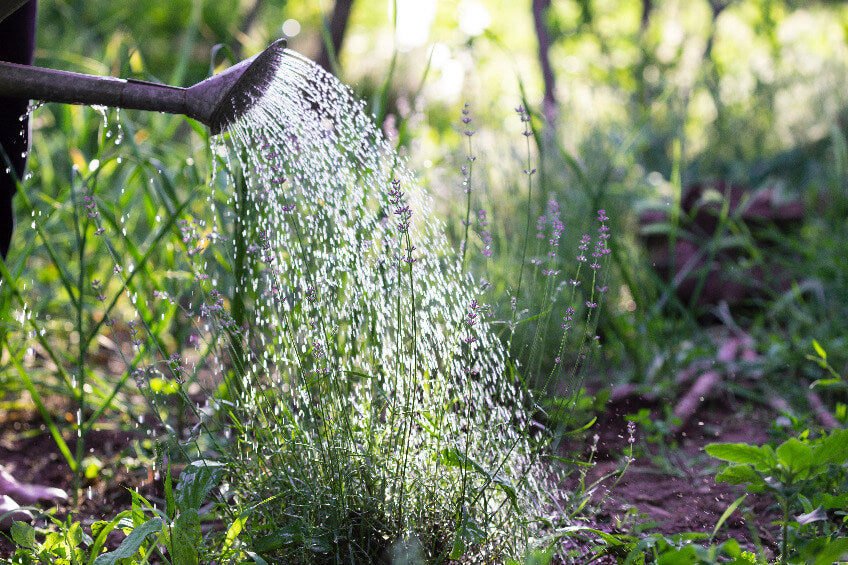
- Understanding the proper techniques for watering can help protect vulnerable plants from the harmful effects of freezing temperatures.
- When it comes to watering during frost-prone periods, there are a few key considerations to keep in mind.
- Firstly, it is important to water plants thoroughly before the onset of freezing temperatures.
- This helps to ensure that the roots are adequately hydrated, providing a buffer against the cold.
- However, it is equally important to avoid overwatering, as excess moisture can lead to root rot and other issues.
- Striking the right balance is key, and it may be helpful to consult specific watering guidelines for different plant types.
- Secondly, timing plays a crucial role in watering strategies for frost prevention.
- Watering in the late afternoon or early evening allows the plants to absorb moisture before temperatures drop, and the soil has a chance to retain the heat.
- This can provide an additional layer of protection against frost damage.
- However, it is advisable to avoid watering too late in the evening, as wet foliage can increase the risk of fungal diseases.
The following table explain the different watering strategies to prevent frost damage:
| Watering Technique | Implementation | Quantitative Impact |
|---|---|---|
| 1. Pre-Frost Irrigation | – Water plants thoroughly before expected frost. | – Apply 1-2 inches of water to create a protective ice layer. |
| – Begin irrigation early in the evening before the expected frost. | – Ice releases latent heat, protecting plants from extreme cold. | |
| 2. Wetting the Soil | – Keep the soil consistently moist in the days leading to frost. | – Moist soil retains more heat than dry soil. |
| – Avoid waterlogging by ensuring proper drainage. | – Provides a mild temperature rise in the soil. | |
| 3. Drip Irrigation at Sunset | – Use drip irrigation during the evening hours. | – Delivers a continuous, slow water supply to plants. |
| – Start irrigation in the late afternoon. | – Helps maintain a stable microclimate around plants. | |
| 4. Applying Ice | – Apply a controlled amount of water to form ice on plants. | – Ice acts as an insulating layer against colder temperatures. |
| – Use caution to avoid excessive ice accumulation. | – Effective in preventing frost damage in certain situations. |
Finding the optimal timing for watering can greatly contribute to the overall health and resilience of plants in the face of frosty conditions.
Monitoring Weather Forecasts and Adjusting Protection Measures
Monitoring weather forecasts and adjusting protection measures is crucial for ensuring the safety and survival of your plants during frosty conditions. By staying informed about upcoming weather conditions, you can proactively take necessary steps to protect your vulnerable plants.
weather forecasting services or apps
One of the most effective ways to monitor weather forecasts is by using reliable weather forecasting services or apps. These tools provide detailed information about temperature drops, frost warnings, and the duration of cold spells. By keeping a close eye on these forecasts, you can plan ahead and make timely adjustments to your protection measures. For example, if a frost warning is issued, you can prepare by covering your plants, insulating them with mulch, or utilizing other protective techniques.Regularly checking the weather forecasts allows you to be proactive rather than reactive, ensuring that you have enough time to implement preventative measures.
By taking the time to monitor and adjust protection measures based on weather forecasts, you can minimize the potential damage caused by frost and safeguard the health of your plants.
Insulating Plants with Natural Materials
Plants are highly sensitive to extreme weather conditions, particularly frost. During cold spells, it is crucial to provide them with insulation to safeguard their well-being. Insulating plants with natural materials is an effective and eco-friendly method to protect them from freezing temperatures and adverse weather conditions.
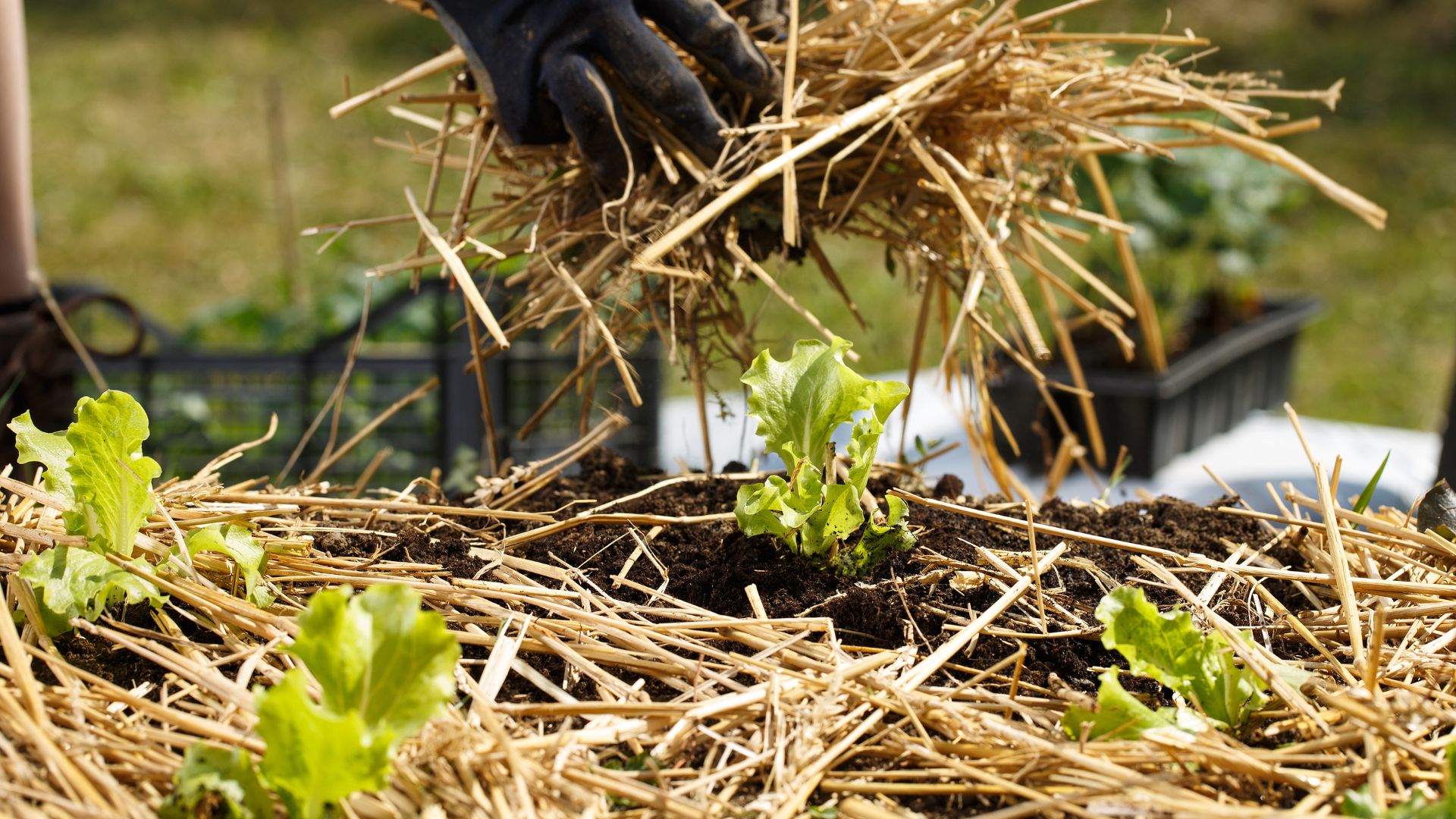
straw
One popular and readily available natural material for insulation is straw. It acts as an excellent thermal barrier, reducing heat loss from the plants and minimizing the impact of freezing temperatures.
By creating a thick layer of straw around the base of the plants, you can provide insulation and prevent cold air from reaching the roots. Additionally, straw assists in retaining soil moisture, which is vital for plant survival during winter dormancy.
Having incorporated EZ-Straw Clean Processed Straw Mulch into my gardening routine, I’ve found it to be a convenient and effective solution for mulching my garden beds. Its clean and processed nature made application a breeze, without worrying about introducing unwanted seeds or debris to my garden. I appreciated the natural insulation it provided to the soil, helping to retain moisture and suppress weed growth, which ultimately reduced the need for frequent maintenance.
However, I did encounter some minor drawbacks during use. While the mulch effectively protected the soil and promoted plant health, I noticed that it required more frequent replenishment compared to other types of mulch. Additionally, in windy conditions, I found that the straw mulch had a tendency to become displaced, requiring regular monitoring and reapplication. Despite these minor challenges, overall, EZ-Straw Clean Processed Straw Mulch proved to be a valuable addition to my gardening arsenal, providing an environmentally-friendly and cost-effective solution for maintaining healthy garden beds.
Clean and Processed: The straw is clean and processed, free from seeds and other debris, reducing the risk of introducing weeds to your garden.
Easy to Apply: This mulch is easy to apply, saving time and effort in the garden. It can be spread by hand or with a spreader for larger areas.
Biodegradable: EZ-Straw mulch is biodegradable, breaking down over time and enriching the soil with organic matter.
Promotes Soil Health: As it decomposes, the mulch adds nutrients to the soil, promoting healthier plant growth and improving soil structure.
Versatile: Suitable for a variety of garden applications, including vegetable gardens, flower beds, and landscaping projects.
Helps Prevent Erosion: By covering the soil surface, EZ-Straw mulch helps prevent erosion caused by wind and water, protecting the integrity of your garden beds.
Temporary Protection: Straw mulch may break down relatively quickly compared to other mulch types, requiring more frequent replenishment.
Attracts Pests: In some cases, straw mulch may attract pests such as rodents or insects, which could be a concern for gardeners in certain areas.
Potential for Mold: If applied too thickly or in areas with poor drainage, straw mulch may retain excess moisture and become prone to mold growth.
Floating Away: In windy conditions, straw mulch may blow away or become displaced, requiring additional anchoring or regular maintenance.
May Contain Residue: Despite being processed, there’s still a possibility that EZ-Straw mulch may contain small amounts of dust or residue, which could be a concern for sensitive individuals or allergy sufferers.
Not Suitable for All Plants: Some plants may not thrive with straw mulch, particularly those that prefer acidic soil conditions or have shallow roots.
Creating Microclimates to Shield Plants from Frost
Creating microclimates is a valuable technique in shielding plants from the damaging effects of frost. By manipulating the immediate environment of the plants, gardeners can provide a more favorable growing condition that minimizes the risk of frost damage.

Purpose: Windbreaks, such as fences or strategically planted trees, act as barriers against cold winds.
Benefits: They create a sheltered area around vulnerable plants, maintaining a warmer temperature.
Impact: Windbreaks significantly reduce the risk of frost damage.
Materials: Place heat-absorbing materials like rocks or water containers near plants.
Day-Night Cycle: These materials absorb heat during the day and release it slowly at night.
Natural Insulation: Thermal mass acts as a natural insulator, protecting plants from extreme cold.
Leverage Landscape Features: Consider the natural topography and existing structures.
South-Facing Walls: Planting near a south-facing wall captures residual warmth from the sun.
Smart Positioning: Optimize plant placement based on available warmth and shelter.
The following table shows the creating microclimates to shield plants from frost:
| Microclimate Technique | Implementation | Quantitative Impact |
|---|---|---|
| 1. Mulching | – Apply a layer of organic mulch around plants. | – Mulch depth of 2-4 inches provides insulation from cold. |
| – Use materials like straw, leaves, or bark for effectiveness. | – Mulching can raise soil temperature by 2-5°F. | |
| 2. Row Covers | – Install row covers or blankets over plants. | – Lightweight covers can provide up to 4°F of temperature rise. |
| – Secure covers loosely to allow air circulation. | – Heavier covers may offer greater protection but limit light. | |
| 3. Watering before Frost | – Water plants thoroughly before expected frost. | – Water acts as a thermal mass, releasing heat slowly overnight. |
| – Apply water early in the day to allow absorption by plants. | – Can provide a temperature rise of 2-5°F near plant surfaces. | |
| 4. Windbreaks | – Install barriers like fences or shrubs to block cold winds. | – Windbreaks reduce wind chill, minimizing temperature drops. |
| – Place windbreaks on the side of prevailing cold winds. | – Effective windbreaks can provide up to a 5°F temperature increase. | |
| 5. Thermal Covers | – Use insulating materials like frost blankets or cloths. | – Lightweight fabrics can offer 2-5°F of temperature protection. |
| – Cover plants before sunset to trap heat generated during the day. | – Provides a microclimate that shields against frost damage. |
By adopting these measures, gardeners can create microenvironments that shield plants from frost and extend the growing season. However, it is essential to consider the specific needs and characteristics of the plants, as each species may have different requirements. Therefore, it is recommended to research and assess the best microclimate practices for the plants being cultivated, ensuring optimal protection against frost while promoting healthy growth.
Recognizing Signs of Frost Damage and Taking Action
Recognizing signs of frost damage is crucial in order to take effective action and prevent further harm to your plants.
:max_bytes(150000):strip_icc()/GettyImages-1202088193-b70bd2de6c7949cda4cb9ca71aa77174.jpg)
Identify Signs of Frost Damage:
- Look for discoloration of leaves or stems, typically turning black or brown.
- Check for wilting or drooping leaves, indicating restricted water and nutrients absorption.
Inspect Overall Plant Health:
- Assess the overall condition of the plant for any irregularities or abnormalities caused by frost.
Immediate Action:
- Upon identifying frost damage, take immediate action to prevent further harm.
Remove Damaged Parts:
- Gently prune off any frost-damaged leaves, stems, or branches.
- Ensure clean cuts to minimize the risk of further damage or infection.
Dispose of Removed Parts:
- Dispose of the removed plant parts properly to prevent attracting pests or diseases.
Monitor for Recovery:
- Keep a close eye on the plant’s recovery process after pruning.
- Provide appropriate care and support to aid in the plant’s recovery from frost damage.
Providing your plants with proper care and attention after frost damage is essential to their recovery. This includes maintaining proper watering and fertilization, as well as protecting the plants from any further frost events. They may also benefit from a layer of mulch or protective coverings to shield them from low temperatures. By recognizing and swiftly responding to signs of frost damage, you can effectively mitigate its impact and help your plants recover.
Long-Term Strategies for Winter Plant Care and Frost Prevention
Long-Term Strategies for Winter Plant Care and Frost Prevention
To ensure the health and survival of your plants during the cold winter months, it is essential to have a solid long-term strategy in place. By taking some proactive measures, you can protect your plants from frost and minimize the risk of damage. Here are a few key strategies to consider:
1. Select cold-hardy plants: When planning your garden, choose plants that are well-suited to your local climate and can withstand freezing temperatures. These plants have built-in adaptability to survive colder conditions, reducing the potential for frost damage.
2. Provide additional insulation: Enhance your plant’s protection by insulating them with natural materials such as straw, hay, or pine needles. These organic materials create a layer of insulation that helps retain warmth in the soil, shielding the roots of your plants from freezing temperatures. Additionally, consider using frost blankets or row covers to provide an extra layer of protection on particularly cold nights.
By incorporating these long-term strategies into your winter plant care routine, you can safeguard your beloved plants from the harmful effects of frost. Remember, prevention is key, so be proactive in your approach and enjoy a thriving garden all year round.
Watch video for more information:
FAQ
What are some signs that a plant has been damaged by frost?
Signs of frost damage on plants include wilted or discolored leaves, browning or blackening of the plant’s tissues, and a general lack of vigor or growth.
How can I create microclimates to protect my plants from frost?
To create a microclimate, you can use materials such as walls, fences, or even large rocks to provide a barrier against cold winds. Additionally, planting taller or dense shrubs around susceptible plants can help create a sheltered area.
Are there any natural materials that can be used to insulate plants from frost?
Yes, materials such as straw, hay, or dead leaves can be used as insulating mulch around the base of plants to protect them from frost.
What are some long-term strategies for winter plant care and frost prevention?
Long-term strategies for winter plant care and frost prevention include selecting cold-tolerant plant varieties, improving soil drainage, and providing adequate water and nutrients throughout the year to ensure healthy plants that are better equipped to withstand frost.
Can I use greenhouses or cold frames to protect my plants from frost?
Yes, greenhouses and cold frames can be effective in shielding plants from frost. These structures provide a controlled environment with regulated temperature and humidity levels, offering optimal protection for vulnerable plants.
How can I identify which plants are more vulnerable to cold weather?
Plants with thin or delicate leaves, as well as those that are not native to your region, are generally more vulnerable to cold weather. Researching the specific cold hardiness of different plant species can also help you identify their level of vulnerability.
Should I prune or trim my plants before winter to prepare them for frost?
Pruning or trimming plants before winter can help remove any dead or damaged branches, which can be more susceptible to frost. However, it is recommended to avoid major pruning or trimming in late fall to prevent new growth that may be more susceptible to frost damage.
How often should I monitor weather forecasts to adjust my plant protection measures?
It is advisable to monitor weather forecasts regularly, especially during the winter months when frost is a concern. By staying informed, you can adjust your plant protection measures accordingly, such as covering plants or providing additional insulation when frost is expected.

Studied Agricultural Engineering-Plant Protection at University of California, Davis.
Head of Content writing team at Southelmontehydroponics.com

